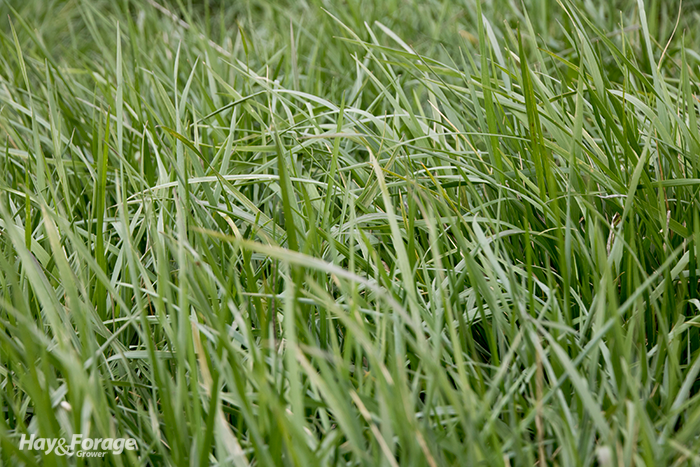
Tall fescue pasture renovation takes months of preparation, especially if farmers convert toxic forage to a novel-endophyte variety. After killing the existing crop and cleaning the slate for the next seeding, the window of opportunity to establish a new stand this fall is narrowing. Of course, despite good intentions and diligent planning, the weather may be the biggest barrier to a successful — and timely — stand establishment.
In a recent issue of the Novel Notes newsletter from the Alliance for Grassland Renewal, Matt Poore maps out the critical steps for novel-endophyte tall fescue pasture renovation in September. The extension beef specialist with North Carolina State University says if farmers haven’t marked their spraying and seeding dates on the calendar yet, they should do so as soon as possible.
The first recommended planting dates for the northern Fescue Belt have already passed, and final optimal planting dates throughout the region are fast approaching. Additional state-specific tall fescue establishment guidelines can be found here.
At this point, farmers should have already purchased new seed, but Poore says it’s not too late to place last-minute orders since seed supplies for novel-endophyte tall fescue are robust this year. “When you receive your seed, check the label and make sure it is not expired and that it carries the Alliance for Grassland Renewal label,” he reminds.
The next step
For those implementing the spray-smother-spray establishment method, Poore recommends minimizing smother crop surface residue by grazing it low or making hay. “If grazed, make sure you graze it pretty hard so that all the material is either consumed by the animals or severely stomped. This will help the new seedlings emerge and grow,” he says.
After this final harvest, wait a few weeks before spraying the field with glyphosate — preferably following a rain — before planting. However, if crabgrass was present in the smother crop, Poore recommends spraying forage immediately and waiting for it to decay before planting since crabgrass residue can be especially challenging for seedlings to grow through.
For the spray-wait-spray establishment method, Poore says the first round of herbicide should have been sprayed about 45 days prior to the target planting date. At this point, he advises farmers to check how good the kill was and be sure to hit missed spots with the second round of herbicide.
Under dry conditions, it may be necessary to extend the waiting period between herbicide applications to allow remaining tall fescue seeds or other weed seeds left in the soil to sprout. If your goal is to avoid using herbicides, tillage is another option to eliminate existing vegetation.
Plant smart
Before planting, calibrate your drill to a seeding depth of 1/4- to 1/2-inch. Where tillage was used, consider using a cultipacker to create a firmer seedbed, making another pass after seeding if the soil is especially fluffy.
Many farmers will opt to add legumes like red and white clover to pastures, and other combinations of cool-season grasses with novel-endophyte tall fescue may also be desirable for hay. However, Poore suggests getting the base established first before putting other species in the mix.
“Develop a strong stand of tall fescue and then add legumes and other species later,” he asserts. “This is because starting with a mix may result in a poor stand of grass, leaving it more vulnerable to later weed infestations.”
He adds that despite delayed planting due to dry conditions, many pasture renovations have been successful throughout the Fescue Belt over the past two years.
“If you are very dry, it is not a bad idea to delay planting until you have some moisture to plant into,” Poore advises. “It is getting dry across the region again this year, so watch the weather and hope for a better season than we had last year.”

